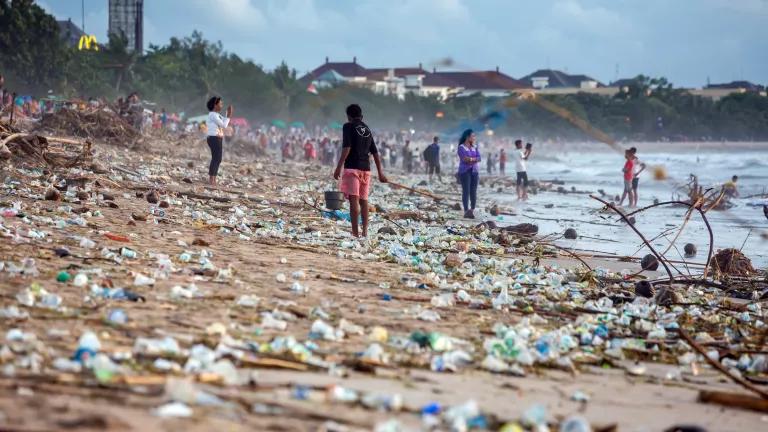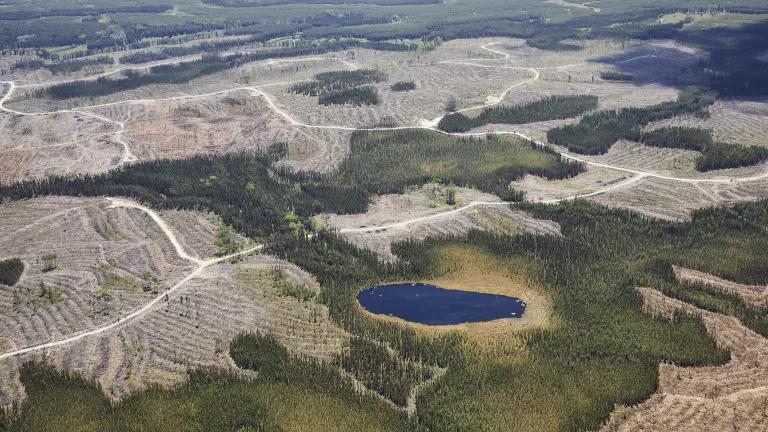Five Takeaways from Part 1 of the UN Biodiversity Conference
Participating countries at the UN Biodiversity Conference have an opportunity to make profound commitments to protect the environment and reverse biodiversity loss.

Beach pollution at Kuta beach, Bali
World Leaders Acknowledge Nature’s Decline Threatens Humanity Now They Must Commit To Reversing It
Government officials from around the world recently finished the first part of a two-part UN Biodiversity Conference that may determine the fate of humanity and whether governments will do what’s necessary to keep millions of species from going extinct. While the meeting is in recess and governments will not adopt global targets for saving nature until next spring—the heart of what this meeting is all about—we can nonetheless conclude that most governments understand the threat nature’s decline poses to life on the planet. Countries will have an opportunity during the second phase of this meeting to prove they will do what is necessary to halt it.
Understanding the Biodiversity Crisis
The UN Biodiversity Conference is the fifteenth meeting of the Conference of the Parties (COP15) to the Convention on Biological Diversity (CBD). The first part took place virtually October 11-15 and the second part will take place April 25 – May 8, 2022, in Kunming, China. In a video message to the opening of the meeting, UN Secretary-General António Guterres outlined the stakes. He said, in part:
We are losing our suicidal war against nature. Our two-century-long experiment with burning fossil fuels, destroying forests, wilderness and oceans, and degrading the land, has caused a biosphere catastrophe…. Damage to the complex web of life that sustains us has already impacted the lives and livelihoods of millions, contributing to hunger, sickness and unemployment. Indigenous people and other vulnerable groups are among the worst affected. Ecosystem collapse could cost almost three trillion US dollars annually by 2030. Its greatest impact will be on some of the poorest and most highly indebted countries…. COP15 is our chance to call a ceasefire. Together with COP26 on climate, it should lay the foundations for a permanent peace agreement. By 2030, we must reverse our trajectory and start to build the world we want.
The five drivers of the biodiversity crisis are:
- Land- and ocean-use changes (example: converting forests to cattle pastures)
- Direct exploitation of species (example: wildlife trade)
- Climate change
- Pollution (example: industrial waste)
- Invasive species
The countries meeting virtually in Kunming, China, launched the beginning of a meeting that will develop and adopt a Global Biodiversity Framework (think of the biodiversity equivalent of the Paris Agreement) for reversing these drivers, putting the natural world on a path to recovery. While the final negotiations and adoption of targets will take place at the conclusion of COP15 in spring 2022, during this opening week countries had an opportunity to signal how serious they are about addressing the biodiversity crisis.
Major Takeaways from COP15, Part I
Here are five major takeaways from the first part of the UN Biodiversity Conference:
- Kunming Declaration. Ministers and other heads of delegation adopted the Kunming Declaration during the high-level segment of the Conference. In it, they noted the efforts and commitment of many countries to protect 30 percent of their land and sea areas by 2030, which is critical for reversing a major driver of nature’s decline, and committed to: “Ensure the development, adoption and implementation of an effective post-2020 global biodiversity framework…to reverse the current loss of biodiversity and ensure that biodiversity is put on a path to recovery by 2030 at the latest….” The commitment to “reverse the current loss of biodiversity” is critical because it signals a readiness to adopt a Global Biodiversity Framework that will disrupt the drivers of nature’s decline.
- Gap Between Rhetoric and Reality. There is a gap between the rhetoric and commitments made by the high-level delegates to the Convention, and the first draft of the Global Biodiversity Framework, which is largely anemic and woefully inadequate. As noted by WWF, the first draft “lacks both the ambition and urgency required to reverse biodiversity loss and secure a nature-positive world this decade.”
For example, while the world has been shocked by the scientific conclusion that more than a million species are threatened with extinction, the draft framework fails to set a goal or target of halting extinctions directly caused by human activity. And in another example, the target addressing wildlife trade and consumption lacks the ambition necessary to address the problem of over exploitation as a direct driver of biodiversity loss and a risk to human health. Instead, it reflects a failed business-as-usual policy—calling for commitments that are already in place (e.g., trade must be sustainable and legal)—with safety requirements grafted on top. This is hardly a framework that will “reverse the current loss of biodiversity.” In the next months, we must align the ambition demonstrated at the ministerial level and in other venues like the Leaders’ Pledge for Nature with the negotiations taking place over the final language of the Global Biodiversity Framework.
- Financing Was Front and Center. There is a significant gap between what we currently spend on protecting and restoring nature and what’s necessary to secure the natural world for future generations. According to a 2020 report by the Paulson Institute, to “reverse the decline in biodiversity by 2030…globally, we need to spend between US$ 722-967 billion each year over the next ten years. That puts the biodiversity financing gap at an average of US$ 711 billion or between US$ 598-824 billion per year.” While the Parties to the Convention may not be thinking about numbers that big, they have been emphasizing the need to secure adequate financing for nature. For example, Chinese President Xi Jinping announced the Kunming Biodiversity Fund of approximately $232 million. This is a step in the right direction, but it will have to be met by the rest of the globe and increased by an order of magnitude.
- The Devil Is in the Details. The world has been down this path before. In 2010, the Parties to the Convention on Biological Diversity adopted the Aichi Biodiversity Targets as part of an updated Strategic Plan for Biodiversity for the period 2011-2020. Unfortunately, the Parties failed to meet most of the targets and nature’s decline accelerated. To ensure this does not happen again, there is a renewed focus on implementation. Thus, in the Kunming Declaration, the Parties stated their support for “the development, adoption and implementation of an effective post-2020 Implementation Plan” and identified the need to “[a]ccelerate and strengthen [strategies and action plans] to ensure the effective implementation of the post 2020 global biodiversity framework at national level.” This is critical because commitments are useless if not followed by adequate action.
- Dangerous Reflexes. While most governments demonstrated an understanding of what’s necessary to reverse nature’s decline, they at the same time often fell back on the failed economic frameworks that have caused the biodiversity crisis. For example, as summarized in the Earth Negotiations Bulletin, many participants talked about the problem of unsustainable consumption and production patterns, highlighting “the importance of future decisions on mainstreaming biodiversity concerns in all economic sectors, including agriculture, forestry, and fisheries, and especially relevant subsidies.” But at the same time, parties noted their interest in valuing biodiversity in economic accounting and developing a financial framework that values natural capital.
While there is something to be gained by accounting for the true cost of economic activities (e.g., the cost of air pollution is much higher than what’s charged at the gas pump), danger lies in putting a price on nature and submitting those values to the market. As George Monbiot has ably noted, people are deluding themselves with the “expectation that we can defend the living world through the mindset that’s destroying it. The notions that nature exists to serve us; that its value consists of the instrumental benefits we can extract; that this value can be measured in cash terms; and that what can’t be measured does not matter, have proved lethal to the rest of life on Earth.”
As with so many other issues, we find ourselves on the precipice. Participating countries at the UN Biodiversity Conference have an opportunity to make profound commitments to protect the environment and reverse biodiversity loss. But that result is not inevitable. Countries must choose to put the world on a path that secures nature for future generations. That was certainly the message coming out of the first part of the UN Biodiversity Conference. The job now is to ensure countries deliver on that message. We must keep pushing them to do so at this critical moment.




